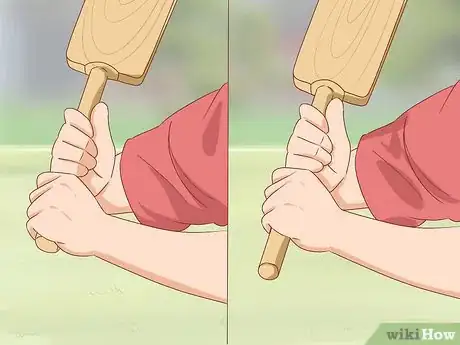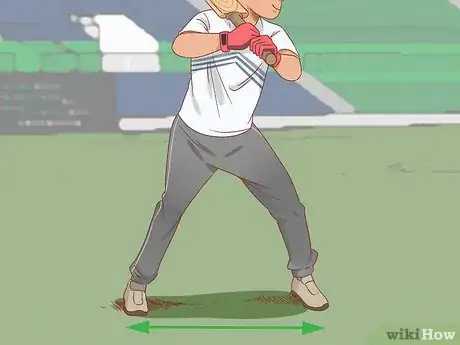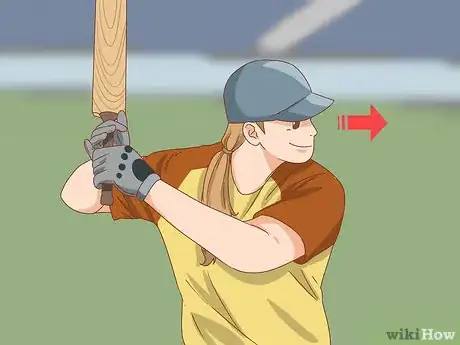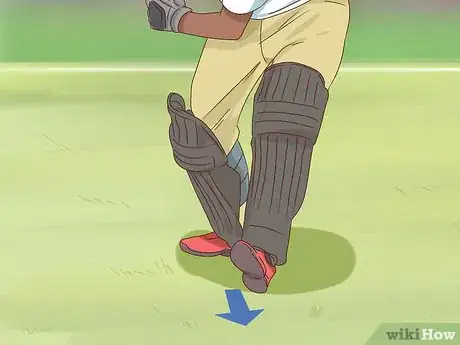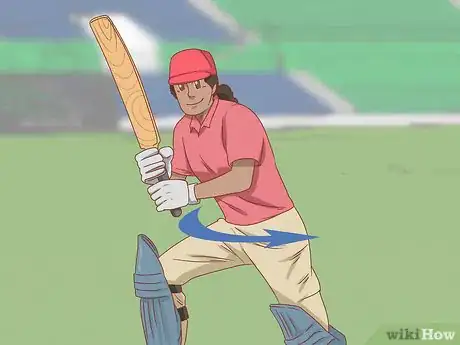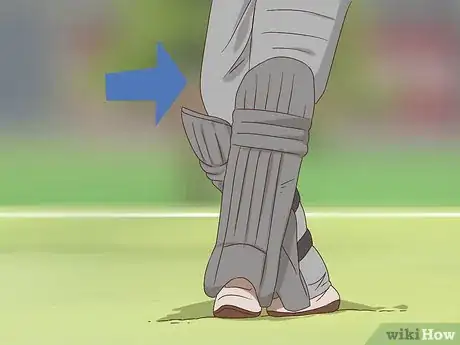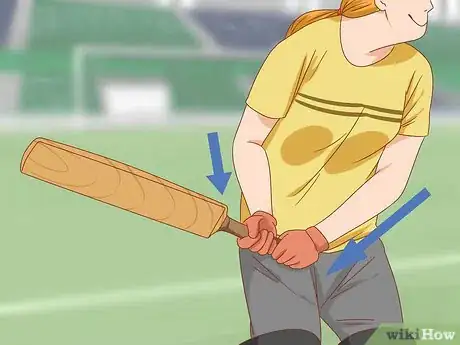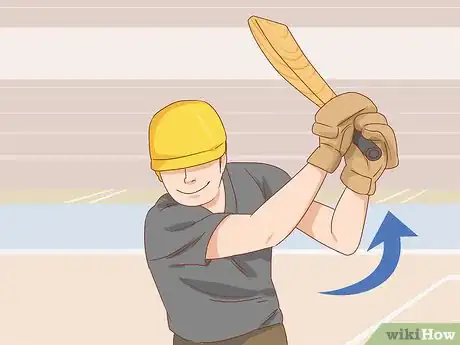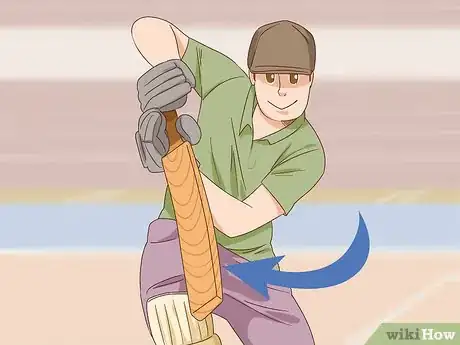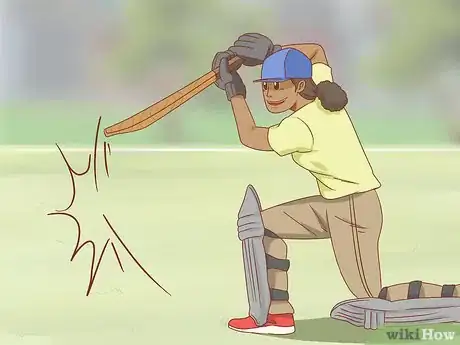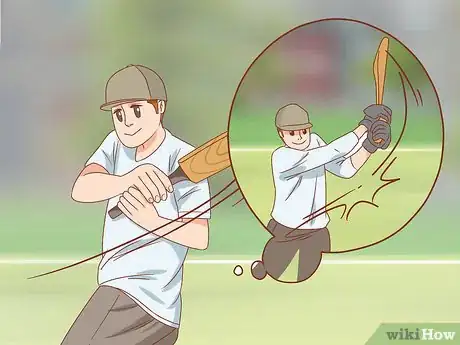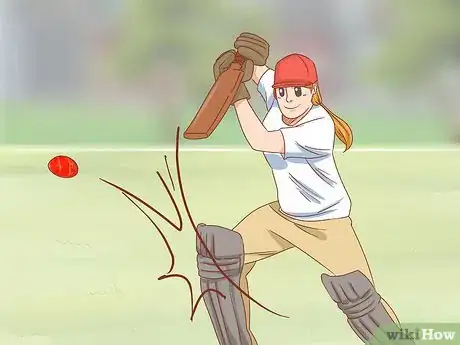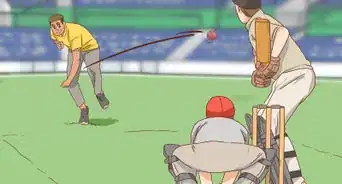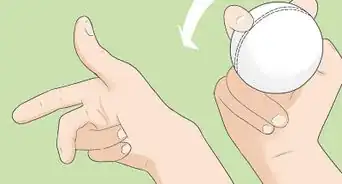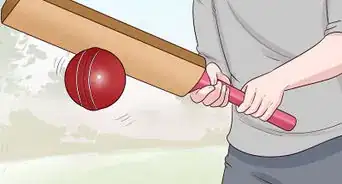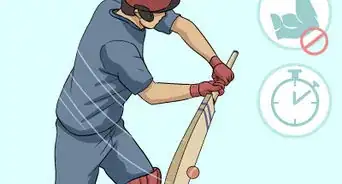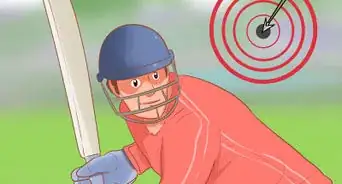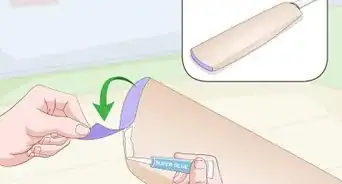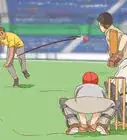This article was co-authored by Rishabh Mehan and by wikiHow staff writer, Christopher M. Osborne, PhD. Rishabhn Mehan is a Cricket Systems Operator in the United Kingdom. He has been coaching cricket in London since 2016, when he received his Level 2 Certificate in Coaching Young People and Adults Cricket (QCF).
There are 10 references cited in this article, which can be found at the bottom of the page.
wikiHow marks an article as reader-approved once it receives enough positive feedback. In this case, 100% of readers who voted found the article helpful, earning it our reader-approved status.
This article has been viewed 139,423 times.
Batting aggressively in cricket doesn’t mean just slugging away wildly in hopes of hitting the ball a long way. Instead, aggressive batting requires a proper setup, a technically-sound but assertive swing, and the confident mindset that comes from lots of practice. Work on batting with controlled aggression when the time is right, and you’ll be more likely to score some 6’s and 4’s!
Steps
Positioning Your Hands, Head, and Body
-
1Use the power grip that feels best to you. Some well-known power hitters (like Virender Sehwag) hold the bat near the bottom of the handle, while others (like Adam Gilchrist) grip it near the top of the handle. The important thing is to find and use the grip that feels right and lets you comfortably make a full swing and follow-through.[1]
- Some people say that holding the bat near the bottom gives more control, while holding it near the top gives you more power. However, your comfort level and your ability to swing freely and fully should be your main consideration when choosing the right power grip.
-
2Set up your legs in a wide, square stance. Spread your legs to at least shoulder width or even a little wider. Square up your body and feet so that you are facing the bowler—your front leg might be only slightly forward. From this stance, you’ll be better able to track the ball, then rotate your hips and drive your body toward it to make powerful contact.[2]
- Like grips, though, batting stances are very personalized. If you feel more confident and comfortable in a more closed stance, that is probably the best option for you—so long as you can rotate and drive forward with power.
Advertisement -
3Keep your head level and square to the bowler. Your face should be pointed straight at the bowler so you can look at them (and the ball) with both eyes. Don’t tilt your head to the left or right, either—the bill of your helmet or cap should be level with the ground.[3]
- If your head is turned inward a little, you’ll be tracking the ball primarily with one eye. But you can’t be successful batting aggressively if you can’t see the ball clearly!
-
4Track the bowler and the ball with both eyes. Stay focused on the bowler until they are about to release the ball. Then use both eyes to track the ball as it approaches you. To bat aggressively, you need to be able to immediately determine where the ball is headed and how to adjust your positioning and swing to make clean contact.[4]
- Some people might think that careful tracking like this is better suited to defensive batting, while aggressive batting should be based on swinging away as hard as possible and hoping you make contact. However, you should think of aggressive batting as a more assertive use of defensive batting principles.
Making a Controlled But Powerful Swing
-
1Step forward but not directly at the ball. Aggressive batting means attacking the ball instead of waiting for it to come to you. Step forward as the ball approaches, but also "clear your front leg" by stepping outward from the ball. This will open up your hips so they can rotate through the swing.[5]
- You don't want to lunge at the ball, though, or you'll sap much of your power before making contact. Practice your timing and ball-tracking skills so you can drive through the ball as you make contact.
- The location of the ball will impact whether you can step out with your front leg and open up your body. If the bowler has placed the ball in a position which doesn’t suit an aggressive swing, fall back on your defensive swing principles.
-
2Rotate your hips as you prepare to make contact. By stepping forward but outward with your front leg, you'll naturally begin to rotate your hips outward. This twisting motion, along with the forward drive provided by your back leg and your extended arms, provides the power during an aggressive stroke.[6]
-
3Transfer your weight forward off your back leg. As you open up your front leg and your hips begin to rotate, your back knee should move forward toward the ball. Lift your back heel and drive your back knee forward just as you are about to make contact with the ball.[7]
- Practice making this weight transfer in a controlled manner. You want to be able to keep your eyes focused on the ball the whole time, which you won’t be able to do if your body is flailing away.
-
4Extend your arms as you make contact. While your hips rotate and your weight shifts off your back leg, extend both arms fully as you make contact with the ball. During an aggressive stroke, your bottom arm and hand will supply more of the power, and your top arm and hand more of the control.[8]
- If your timing and alignment are correct, you should be able to extend your arms and make contact on the bat's "sweet spot." Most batters say this spot is about two-thirds of the way down the flat blade of the bat, but you'll also learn to identify it by the solid "feel" of making contact there.
-
5Continue your rotation and extension in your follow-through. Follow-throughs are largely a matter of personal preference, with some batters preferring to sweep the bat over their shoulder, and others twisting the bat to keep it in front of them. The important thing is to drive through the ball instead of stopping your body once you make contact.[9]
- Cutting your follow-through short will sap you of much of the power in your aggressive stroke.
Building the Confidence to Bat Aggressively
-
1Master your defensive stance and swing first. Most batting instructors seem to agree that an aggressive approach should be built from the foundation of a solid defensive approach. Defensive batting allows you to focus on tracking the ball, positioning your body, and making controlled contact.[10]
- Some instructors do, however, say that you should do the reverse and start by developing your aggressive swing, since this approach is usually a novice batter’s natural inclination. You’ll have to decide which approach is best for you.[11]
-
2Adapt your aggressive style from your defensive base. Assuming that you’ve chosen to develop confidence in your defensive batting approach first, use it as the basis for your aggressive stroke. In many ways, your aggressive swing will simply involve doing more of what you’re already doing—more clearing of the front leg, more hip rotation, more arm extension.[12]
- If you're practicing in a batting cage or an open field, have your partner toss tennis balls from a short distance. Spend time using your defensive stroke to just make controlled contact and place the ball, then build up to your power stroke. Then, have them move back to the standard bowling position and repeat the process.
-
3Practice hard and visualize success. Aggressive batting isn’t all physical—there’s a critical mental component involved. You have to believe you can make clean, powerful contact with the bowler’s offering. As with most aspects of cricket, practice and repetition builds confidence, and confidence is a necessity for successful aggressive batting.[13]
- Before the match, and even before you step up to the wicket, take a moment to visualize your ideal power stroke and result. Envision success, not failure!
-
4Show the bowler you can defend their best efforts. Aggressive hitting isn’t just about trying to get 6 runs with every stroke. When the opposing bowler makes a great effort, simply bat the ball away safely and show them that you can handle their “best stuff.” Let them make a mistake, and then pounce on it.[14]
- When done successfully, aggressive hitting is a great way to pile up runs. It can also demoralize the bowler and the entire opposing team, which can open the door to mistakes on their side and more success for yours.
Expert Q&A
-
QuestionHow do I play pull shot and in swing or out swing a ball?
 Rishabh MehanRishabhn Mehan is a Cricket Systems Operator in the United Kingdom. He has been coaching cricket in London since 2016, when he received his Level 2 Certificate in Coaching Young People and Adults Cricket (QCF).
Rishabh MehanRishabhn Mehan is a Cricket Systems Operator in the United Kingdom. He has been coaching cricket in London since 2016, when he received his Level 2 Certificate in Coaching Young People and Adults Cricket (QCF).
Cricket Coach If the ball is short, step back and across, then swing toward the left side. Pick the line of the ball, which will allow you to move across enough to pull.
If the ball is short, step back and across, then swing toward the left side. Pick the line of the ball, which will allow you to move across enough to pull. -
QuestionHow do I focus on a fast ball while batting?
 Rishabh MehanRishabhn Mehan is a Cricket Systems Operator in the United Kingdom. He has been coaching cricket in London since 2016, when he received his Level 2 Certificate in Coaching Young People and Adults Cricket (QCF).
Rishabh MehanRishabhn Mehan is a Cricket Systems Operator in the United Kingdom. He has been coaching cricket in London since 2016, when he received his Level 2 Certificate in Coaching Young People and Adults Cricket (QCF).
Cricket Coach This takes practice.The more you practice focusing on the fast ball, the better you'll get. Stick with it!
This takes practice.The more you practice focusing on the fast ball, the better you'll get. Stick with it! -
QuestionWhen I go to bat I have a lot of confidence, but I lose it after missing a few balls. What can I do?
 Raythatha DeepCommunity AnswerWhen you get low on confidence, take a quick single and get some more time to understand the balls, so that when you get on crease you can hit the ball properly. You could also take a water break and get relaxed again.
Raythatha DeepCommunity AnswerWhen you get low on confidence, take a quick single and get some more time to understand the balls, so that when you get on crease you can hit the ball properly. You could also take a water break and get relaxed again.
References
- ↑ https://youtu.be/KIxQg1iyd3g?t=27s
- ↑ https://youtu.be/Jz6abHxAJmc?t=1m16s
- ↑ https://youtu.be/2wdT4zzNinI?t=9m57s
- ↑ https://youtu.be/2wdT4zzNinI?t=9m57s
- ↑ https://youtu.be/Jz6abHxAJmc?t=1m17s
- ↑ https://youtu.be/1umybq-uBCs?t=53s
- ↑ https://youtu.be/1umybq-uBCs?t=53s
- ↑ https://youtu.be/1umybq-uBCs?t=1m8s
- ↑ https://youtu.be/1umybq-uBCs?t=1m8s
- ↑ https://youtu.be/2wdT4zzNinI?t=1m22s
- ↑ http://www.thecricketmonthly.com/story/1112785/-learn-to-be-aggressive-and-then-i-will-teach-you-defence
- ↑ https://youtu.be/2wdT4zzNinI?t=1m39s
- ↑ http://www.thecricketmonthly.com/story/1112785/-learn-to-be-aggressive-and-then-i-will-teach-you-defence
- ↑ https://youtu.be/2wdT4zzNinI?t=4m56s
About This Article
Batting aggressively in cricket requires proper positioning, an assertive swing, and a confident mindset. Find a grip that feels comfortable to you, then set your legs in a wide, square stance, which will allow you to better track the ball. Stay super focused on the bowler as they release the ball, then move your attention to following the ball’s path. Aggressive batting means attacking the ball instead of waiting for it to come to you, so step forward as the ball approaches, rotate your hips slightly, and extend your arms to make contact. If you’re getting in your own head, take some time to visualize yourself hitting a successful power stroke. Much of aggressive batting is mental, so this will help you make clean, powerful hits! To learn how to bat defensively, read more from our coaching co-author!
